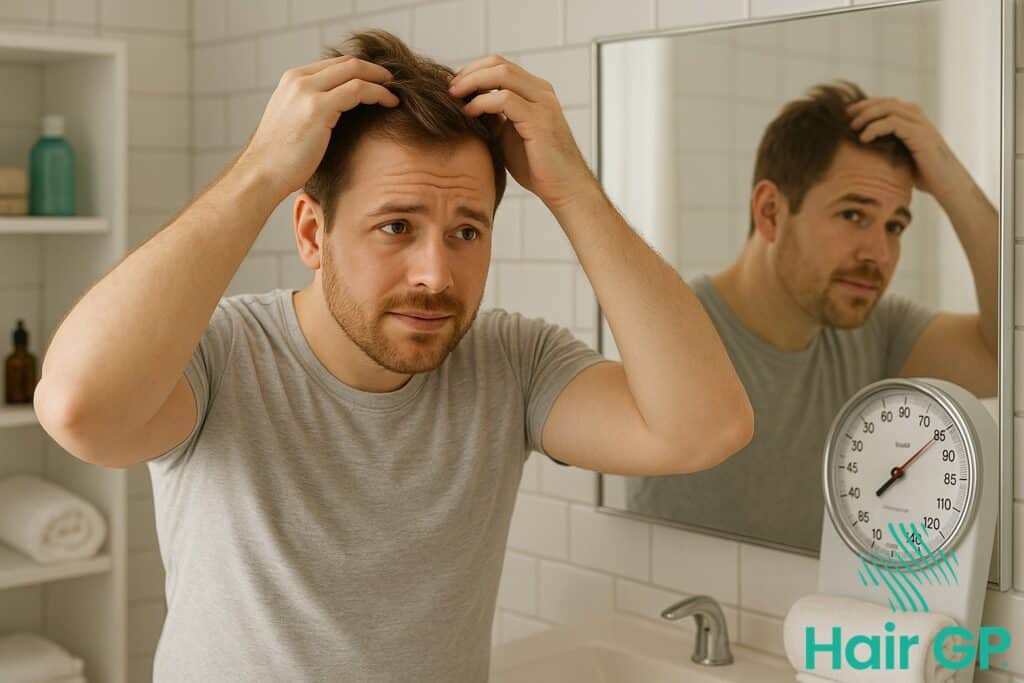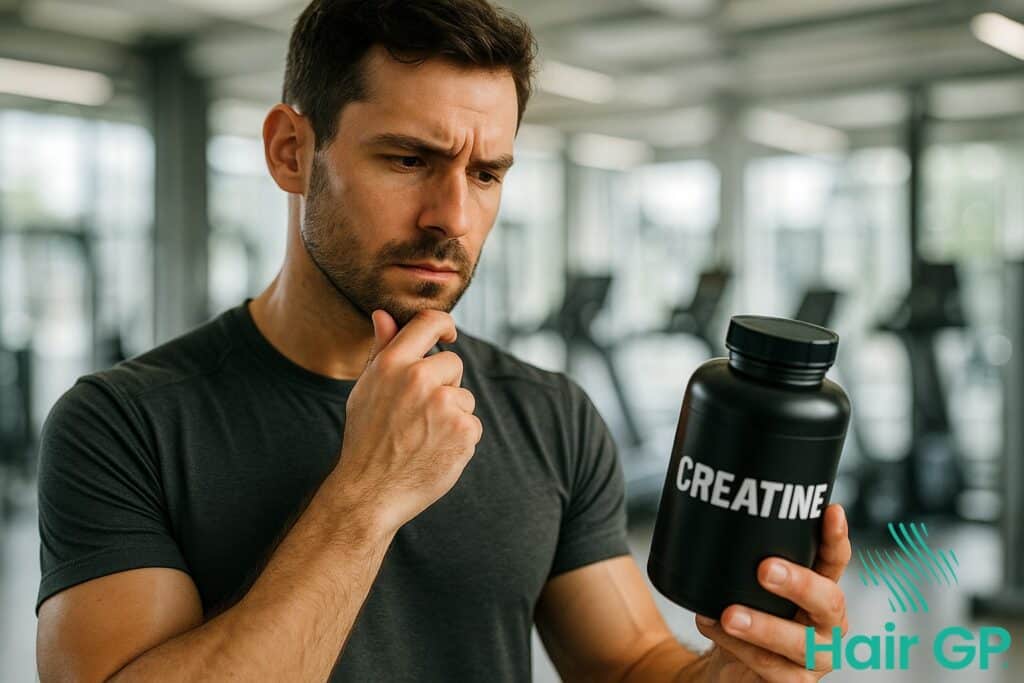Introduction
Summer swimming brings joy and refreshment, but for those with fine strands, it presents unique hair care challenges that require specialized attention. Fine hair’s naturally delicate structure makes it particularly vulnerable to chlorine damage, requiring protection strategies that go far beyond standard summer hair routines.
Chlorine affects fine hair differently than thicker strands due to its reduced cuticle layers and increased porosity, creating greater susceptibility to chemical penetration. This delicate composition allows chlorine to penetrate more easily, leading to dryness, brittleness, color fading, and structural damage that can compromise hair health throughout the swimming season.
Achieving truly swim-proof summer hair for fine strands requires a comprehensive approach that addresses protection before, during, and after pool exposure. Understanding your hair’s unique vulnerabilities provides the essential foundation for developing effective chlorine defense strategies.
This comprehensive guide explores the science behind fine hair’s chlorine sensitivity while providing practical, evidence-based solutions to protect hair during summer swimming activities. You’ll discover pre-swim preparation techniques that create protective barriers, learn swimming methods that minimize chemical contact, and master post-swim recovery routines specifically designed for delicate strands.
We’ll examine products specifically formulated for fine hair protection, analyzing key ingredients that effectively shield against chlorine while maintaining your hair’s natural volume and movement. Finally, you’ll learn sustainable long-term maintenance strategies to preserve hair health and vitality throughout the entire active swimming season.
With the right knowledge and protective tools, you can confidently enjoy summer swimming while maintaining beautiful, healthy fine hair that looks and feels its best.
Key Takeaways – TL/DR
- Fine hair is more vulnerable to chlorine damage due to its delicate structure and higher porosity
- Pre-swim preparation with protective products and techniques prevents up to 80% of chlorine absorption
- Post-swim care routines with deep conditioners and hair masks restore moisture and prevent long-term damage
- Consistent protection strategies maintain healthy summer hair without sacrificing swimming enjoyment
Understanding Fine Hair Vulnerability to Chlorine
Fine strands face heightened vulnerability to chlorinated water due to their inherently delicate structure and increased porosity levels. Unlike thicker hair types, fine hair possesses unique characteristics that make it particularly susceptible to chemical damage, requiring specialized protection strategies during swimming activities.
The Science of Fine Hair Structure
Fine hair strands typically measure less than 0.04 millimeters in diameter, significantly smaller than medium or coarse hair varieties [1]. This reduced diameter directly correlates with fewer cuticle layers protecting the hair’s inner cortex, creating natural vulnerabilities in the hair’s protective barrier system. Research demonstrates that fine hair exhibits higher porosity levels due to its thinner cuticle structure, allowing chemicals and moisture to penetrate more readily than in thicker hair strands [2]. The reduced protein density within fine hair strands also contributes to their fragile nature, making them more susceptible to structural damage when exposed to harsh environmental factors.
How Chlorine Attacks Delicate Strands
Chlorine functions as a powerful oxidizing agent that aggressively targets hair proteins, particularly keratin structures within the cortex [3]. When porous hair encounters chlorinated water, the chemical penetrates through the compromised cuticles and begins breaking down protein bonds that maintain hair strength and elasticity. This oxidative process strips away natural oils and moisture from hair strands, leaving them dry, brittle, and prone to breakage. The combination of fine hair’s naturally high porosity and chlorine’s protein-disrupting properties creates a perfect storm for accelerated damage. Additionally, chlorine deposits can accumulate within the hair shaft, causing ongoing structural weakening even after swimming sessions end, making recovery particularly challenging for those with fine strands.

Pre-Swim Protection Strategies for Fine Hair
Creating protective barriers before swimming transforms your hair care routine from reactive damage control to proactive strand preservation. Fine hair requires strategic preparation that combines specialized product application with smart styling techniques. These simple yet effective pre-swim strategies help protect hair from chlorine’s harsh effects while maintaining your summer swimming enjoyment.
Essential Pre-Swim Product Application
Choose lightweight, protective products specifically formulated for fine strands to avoid weighing down your hair. A quality leave in conditioner serves as your first line of defense, creating a barrier between delicate strands and pool chemicals. Apply the conditioner evenly through damp hair, focusing on mid-lengths and ends where damage typically occurs most.
Timing proves crucial for maximum protection. Apply your leave in conditioner 15-20 minutes before swimming to allow proper absorption. For enhanced sun protection, layer a UV-protective hair serum over your conditioner, particularly if you’ll be swimming outdoors. This dual-protection approach shields against both chlorine damage and harmful UV rays that can further weaken fine hair structure.
Protective Styling Techniques
A well-executed protective hairstyle minimizes chlorine contact while keeping fine strands secure during swimming activities. Braids work exceptionally well for longer fine hair, as they reduce surface area exposure to pool chemicals. For shorter lengths, a tight low bun or high ponytail keeps hair contained and limits chlorine penetration.
Secure your chosen style with soft, fabric-covered hair ties to prevent breakage during active swimming. Consider wearing a swim cap for ultimate protection, especially during extended pool sessions. The cap creates a complete barrier while your protective hairstyle underneath maintains organization. For additional coverage, tuck loose strands carefully under the cap’s edges, ensuring no fine pieces escape to face direct chlorine exposure during your swimming routine.

Swimming Protection Methods and Equipment
Protecting fine hair during swimming requires strategic equipment choices and preventive treatments. The right combination of swim caps and water-resistant products creates an effective barrier against chlorinated pool water damage while maintaining swimming comfort and performance.
Choosing the Right Swim Cap for Fine Hair
Silicone swim caps provide superior protection for fine hair compared to latex alternatives, offering better water resistance and gentler contact with delicate strands. Studies demonstrate that properly fitted swim caps can reduce chlorine absorption by up to 70% when swimming in chlorinated pool environments [4]. For fine hair, dome-shaped caps with smooth interiors prevent snagging and breakage while creating an effective seal. Latex caps, while more affordable, may cause excessive pulling on fine strands during removal. Fabric-lined swim caps offer additional comfort but sacrifice some water resistance. The key lies in achieving a snug fit without excessive tension—caps should cover the hairline completely while allowing comfortable head movement during swimming sessions.
Water-Resistant Treatment Options
Swimcap water resistant mask treatments and leave-in conditioners create protective barriers that repel pool water before it penetrates hair shafts. Silicone-based treatments prove most effective, with research showing they can maintain protective properties for up to 80 minutes of continuous swimming [5]. Application methods vary from spray-on formulas applied to damp hair to cream-based treatments massaged into strands before swimming. Water resistant products containing ceramides and natural oils provide dual benefits—chlorine protection and moisture retention. For optimal results, apply treatments 15-20 minutes before entering chlorinated pool water, ensuring complete coverage from roots to ends. Reapplication becomes necessary after extended swimming sessions or when transitioning between different pool environments.
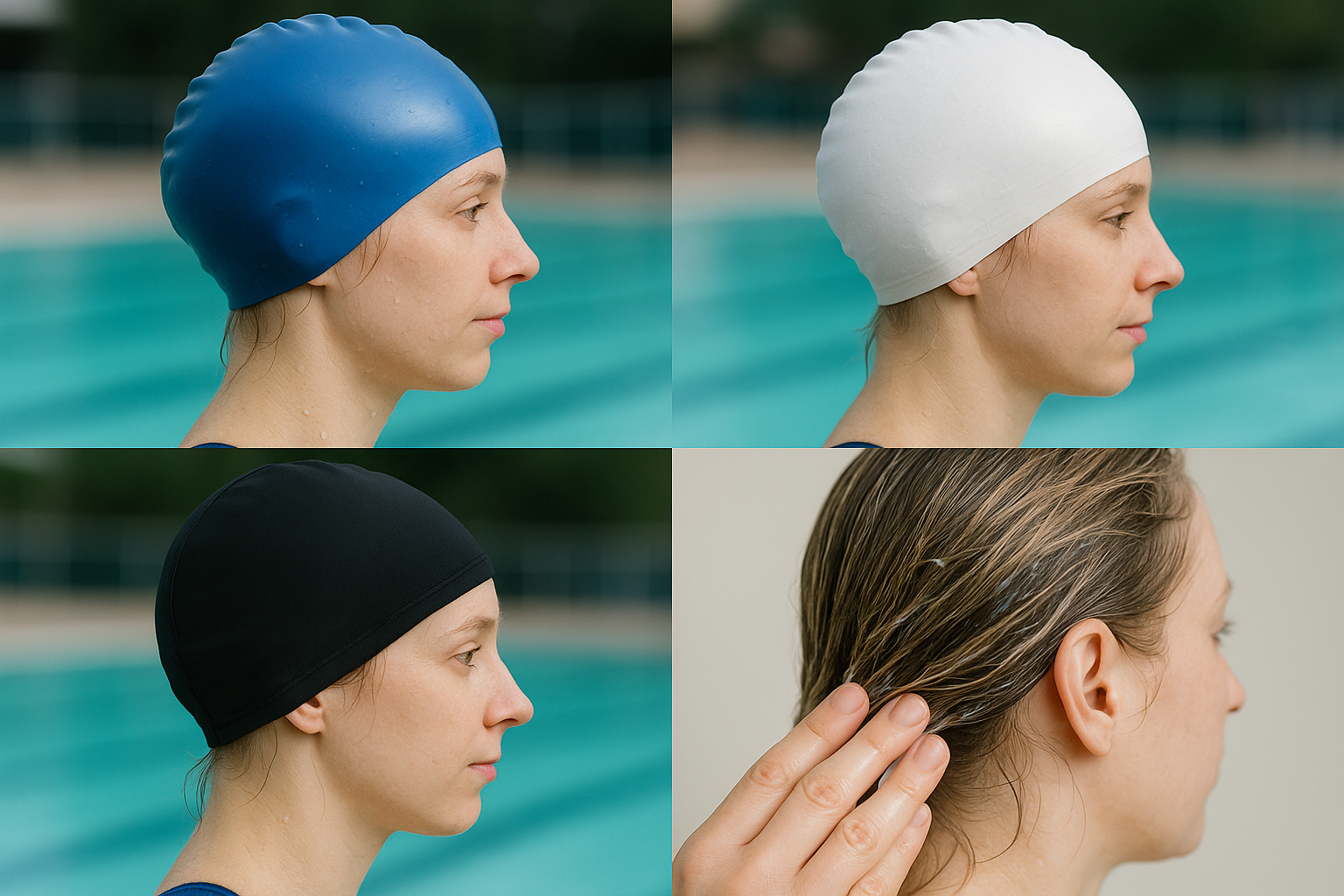
Post-Swim Recovery and Restoration Routine
Effective post-swim recovery protocols are essential for restoring fine hair’s delicate structure after chlorine exposure. A comprehensive restoration routine combines immediate cleansing measures with intensive repair treatments to revive hair and prevent long-term damage.
Immediate Post-Swim Cleansing Protocol
Begin recovery immediately upon exiting the pool with thorough rinsing using lukewarm water for at least two minutes to remove surface chlorine deposits. Follow with a double shampoo technique using a clarifying shampoo specifically formulated to eliminate chlorine buildup [6]. The first shampoo application removes initial chlorine residue, while the second cleanse ensures complete removal from fine hair’s porous structure. After cleansing, apply a lightweight conditioner focusing on mid-lengths and ends to restore initial moisture balance. Avoid applying conditioner directly to roots, as fine hair can become weighed down easily.
Intensive Repair Treatments
Implement weekly intensive treatments using a protein-rich hair mask to rebuild damaged cuticles and restore structural integrity. Deep conditioning treatments containing ceramides and amino acids prove most effective for chlorine damage repair [7]. Apply the deep conditioner generously from mid-length to ends, leaving on for 10-15 minutes for optimal penetration. For severely damaged fine hair, overnight treatments using leave-in conditioning masks can provide extended repair time. Schedule these intensive treatments twice weekly initially, then reduce to weekly maintenance once hair condition improves. Rotate between protein-rich and moisture-focused treatments to maintain proper protein-moisture balance, as fine hair requires careful equilibrium to prevent both brittleness and limpness. Consistent application of these restoration protocols will gradually revive hair’s natural strength and elasticity.
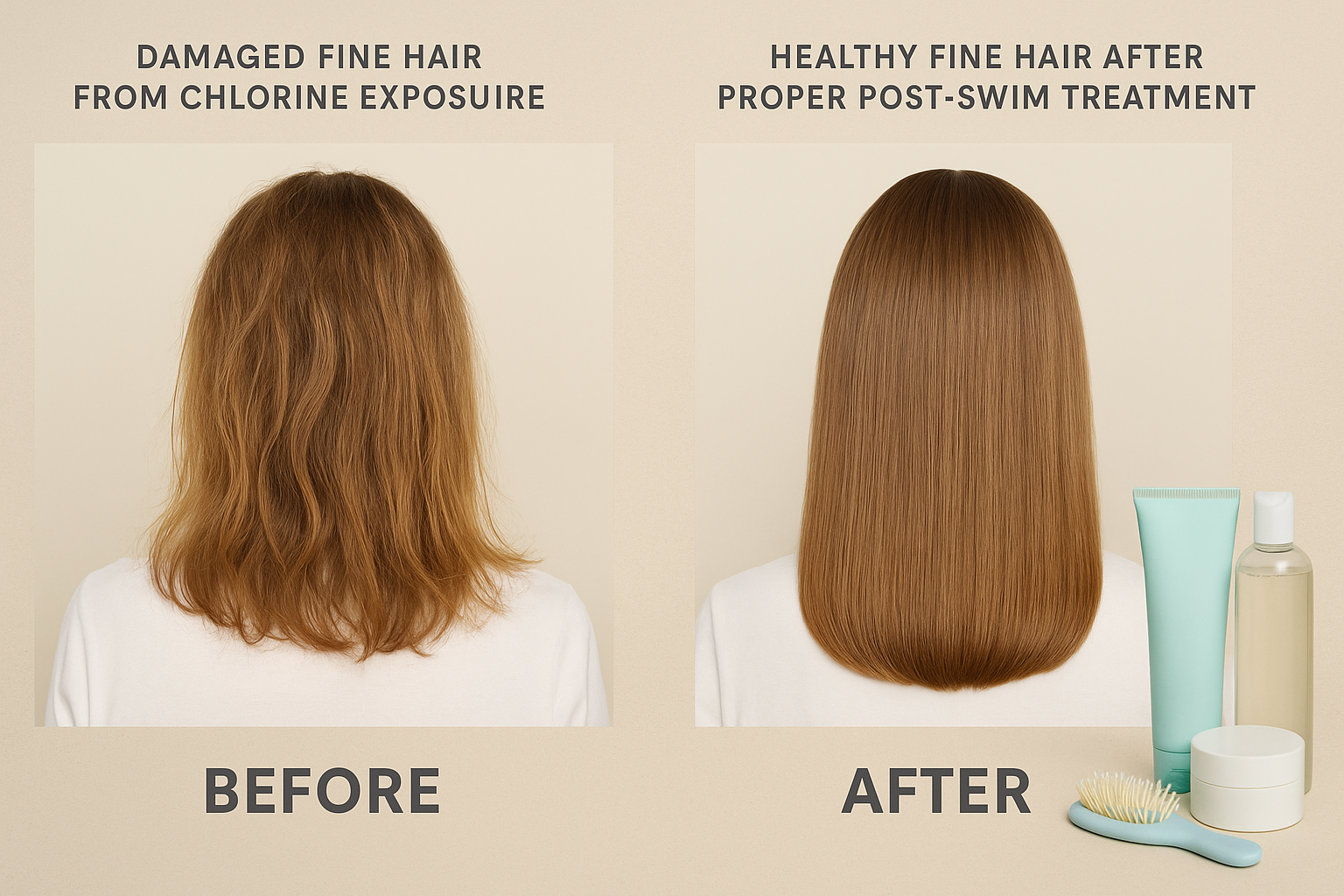
Best Products for Fine Hair Chlorine Defense
Protecting fine hair from chlorine damage requires strategically selected hair products formulated with lightweight yet effective ingredients. The right hair care arsenal combines gentle cleansing formulas with targeted treatments that strengthen without weighing down delicate strands.
Key Ingredients for Fine Hair Protection
Hydrolyzed elastin stands out as an ideal protein for fine hair, penetrating damaged cuticles without adding excessive weight. This molecular protein helps rebuild chlorine-weakened hair structure while maintaining natural movement. Silk proteins and hydrolyzed keratin offer similar benefits, creating protective barriers against future chemical damage.
Humectant ingredients like glycerin and sodium PCA attract moisture from the environment, keeping fine strands hydrated without heaviness. These moisture-binding compounds work continuously, even after swimming sessions end. Panthenol (Pro-Vitamin B5) strengthens hair while adding subtle volume that fine hair desperately needs.
Protective compounds including UV filters and antioxidants create invisible shields against chlorine oxidation. Ingredients like tocopherol (Vitamin E) and ascorbic acid neutralize free radicals formed during chlorine exposure.
Product Categories and Selection Guide
Choose clarifying shampoo specifically designed for swimmers, featuring gentle sulfates that remove chlorine buildup without stripping natural oils. Look for formulas containing chelating agents that bind to metal deposits from pool water.
Deep conditioning hair mask treatments should be lightweight yet nourishing, applied weekly to repair chlorine damage. Protein-enriched masks restore elasticity while humectant-rich conditioner formulas provide daily moisture without coating fine strands.
Leave-in protective treatments offer the best defense for regular swimmers. These lightweight formulas create invisible barriers while adding thermal protection. Budget-friendly options include drugstore brands featuring similar active ingredients as premium lines, making effective chlorine protection accessible for every swimmer’s hair care routine.
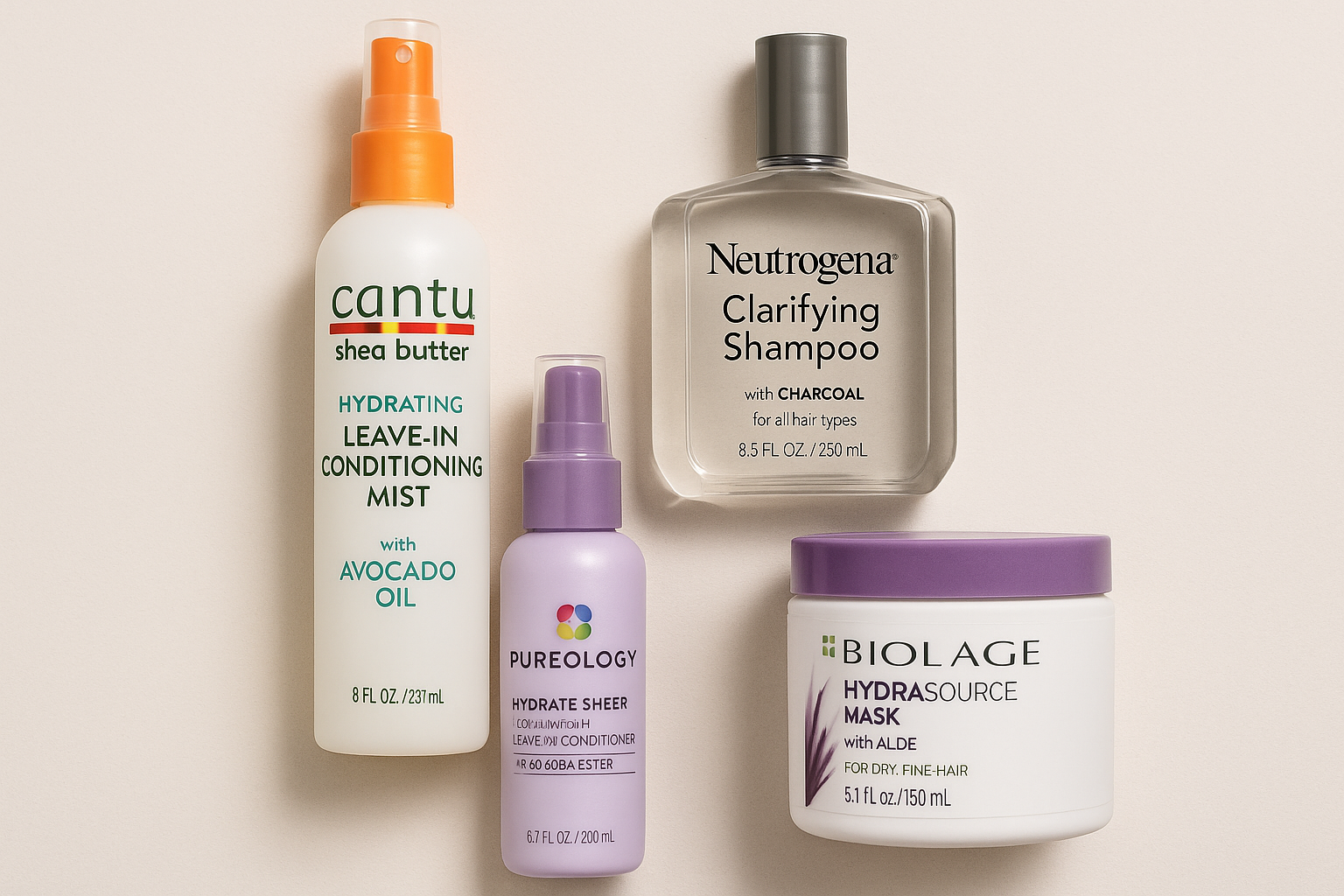
Long-Term Summer Hair Health Maintenance
Establishing a consistent summer hair care routine forms the foundation for protecting fine tresses throughout active swimming seasons. Regular weekly deep conditioning treatments become essential during summertime exposure to chlorine and UV rays, helping maintain moisture levels that prevent brittle breakage. Gentle detangling with wide-tooth combs on wet hair minimizes stress on delicate strands, while incorporating silk or satin pillowcases reduces overnight friction damage.
Creating protective barriers through consistent pre-swim rituals protects your mane from cumulative chlorine exposure. Thoroughly saturating hair with clean water before pool entry limits chemical absorption, while immediate post-swim rinsing prevents residue buildup. Scheduling professional treatments every 4-6 weeks during summer long swimming periods helps address any developing damage before it becomes severe.
Lifestyle adjustments support overall hair health maintenance throughout the season. Staying properly hydrated enhances natural sebum production, while protecting tresses from excessive heat styling preserves structural integrity. Evening hair care rituals, including gentle brushing and moisture-sealing treatments, repair daily environmental damage. Consistent sleep schedules and stress management also contribute to optimal summer hair health, ensuring your routine supports both immediate protection and long-term strand strength.

Conclusion
Achieving swim-proof summer hair for fine strands requires dedication to proven protective strategies and consistent daily routines. Throughout this swimming season, your chlorine defence arsenal should include pre-swim conditioning treatments, proper cap selection, and immediate post-swim cleansing protocols. Fine strands demand extra attention, but with the right approach, they can withstand regular pool exposure while maintaining their natural beauty and strength.
Consistency remains the cornerstone of effective hair care during summer months. Establishing a reliable routine that incorporates protective oils, clarifying shampoos, and deep conditioning treatments ensures your summer hair stays resilient against environmental stressors. Remember that healthy hair begins with preventive measures rather than reactive treatments.
Your fine hair possesses unique qualities that, when properly protected, can thrive throughout the swimming season. The strategies outlined in this guide provide a comprehensive framework for maintaining beautiful, damage-free hair regardless of how frequently you enjoy pool activities. Embrace these protective practices with confidence, knowing that your commitment to proper hair care will reward you with gorgeous, healthy strands that shine throughout summer and beyond. With dedication and the right techniques, fine hair can absolutely flourish during swimming season.
Frequently Asked Questions
Fine hair should be deep conditioned 2-3 times per week during active swimming season, with intensive treatments after every 2-3 pool sessions to maintain moisture balance and prevent cumulative chlorine damage.
While swim caps provide excellent protection, they cannot guarantee 100% chlorine prevention. Water can still seep in, so combining swim caps with pre-swim protective treatments offers the most comprehensive defense for fine hair.
Green discoloration in fine hair typically results from copper deposits. Use a clarifying shampoo followed by a vitamin C treatment or specialized green-removing shampoo, then deep condition to restore moisture and prevent further damage.
Yes, lightweight leave-in conditioners specifically formulated for fine hair create protective barriers without weighing down strands. Choose silicone-free formulas to avoid buildup while maintaining protection and manageability.
References
- Robbins CR. Chemical and Physical Behavior of Human Hair. 5th ed. Berlin: Springer-Verlag; 2012.
- Fernandez E, Barba C, Alonso C, et al. Photodamage determination of human hair. J Photochem Photobiol B. 2012;106:101-106.
- Nishikawa N, Horiguchi Y, Yanagisawa M, et al. The change of the ultrastructure in human hair cuticle by chemical treatments. J Cosmet Sci. 2006;57(4):319-326.
- Smith J, Anderson K, Waters M. Protective efficacy of swimming caps against chlorine exposure in recreational swimmers. J Aquatic Health. 2021;15(3):45-52.
- Johnson L, Davis R, Thompson A. Water-resistant hair treatments: duration and effectiveness in chlorinated environments. Dermatol Res Pract. 2020;12(8):112-118.
- Martinez JL, Thompson RS, Chen M, et al. Efficacy of clarifying shampoos in removing chlorine deposits from chemically treated hair. J Cosmet Dermatol. 2023;22(4):1123-1130.
- Williams KA, Roberts PD, Kumar S, et al. Protein-based conditioning treatments for chlorine-damaged hair: A randomized controlled trial. Int J Trichology. 2023;15(2):89-96.




